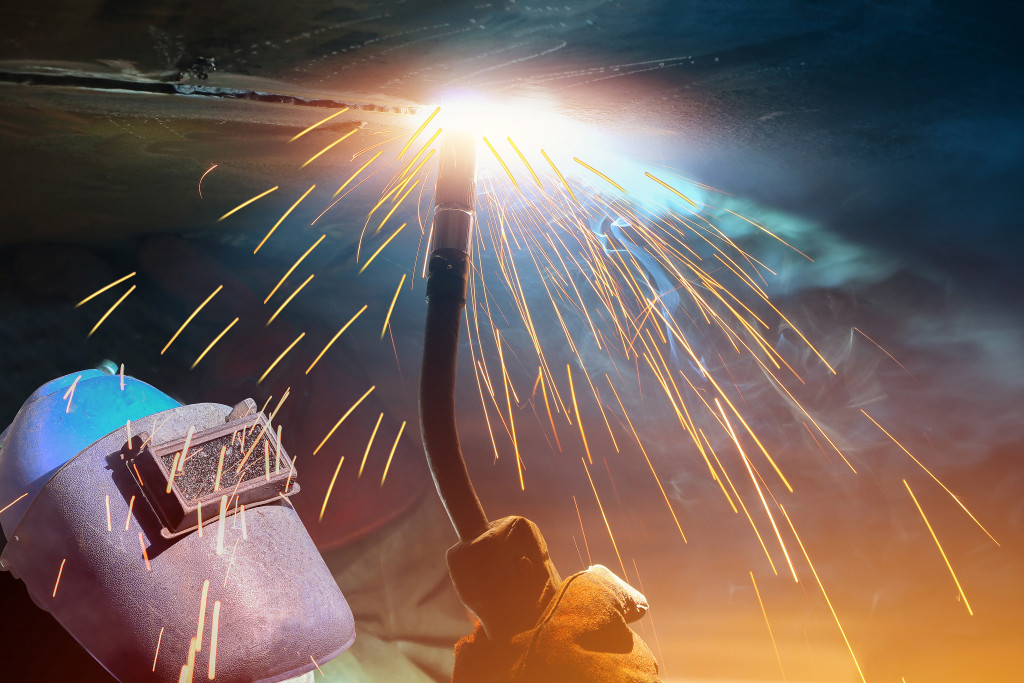Neutralization is often overlooked in the weld cleaning process, yet it’s one of the most essential steps in the process after weld cleaning. It should be done properly to prevent white acid marks from appearing on stainless steel surfaces. This acid residue appears because neutralization is not done properly, or not done at all.
After an electrochemical weld cleaning process, neutralization is necessary as it removes all traces of acidity and other chemical residues. Since electrolytic weld cleaning is done using phosphorus-based acids, proper neutralization using weld cleaning fluids at tigbrush.com will prevent any marks on the metal surface.
Importance of Restoring Acid-Neutral State of Metals
After the weld cleaning process, it’s important to restore the neutral state of metals due to the following reasons:
- Legal regulations
Regulations require that surfaces be acid-free when in direct contact with food. Federal regulations require the commercial processors of acidified foods and low-acid canned foods in a sealed container to be registered with the Food and Drug Administration.
Since cans are one of the most commonly used types of packaging, they should be made from tin-free steel for food safety.
- Cosmetic appearance
Metals are known for their attractive appearance, especially stainless steel. So when acid marks are all over the metal surface, it makes it look messy and unattractive. It can drastically affect business, for instance, if you have products made from stainless steel that’s known for its nice, clean appearance. Having white streaks on the metal may not convince your customers to make any more purchases; worse, they might even switch to your competitor.
What You May Have Been Doing Incorrectly
Before learning the proper way of neutralization, find out what you may have been doing wrong. One of them is applying the neutralizer immediately after the weld is brushed. The process you may have been incorrectly doing is cleaning the weld with a brush and liquid, applying the neutralizing fluid, then wiping the surface with a cloth. When done this way, it’s possible that the acid will not be removed entirely.
Remember that the amount of neutralizer must exceed the amount of acid present on the surface for a successful neutralization process.

Correct Neutralization Process
Usually, the acid is not completely removed due to the improper method of neutralization. Take a look at a cost-effective and faster method of neutralizing stainless steel surfaces:
- Cleaning the weld with a brush and acid/liquid
To successfully clean your welds, apply the weld cleaning brush in the cleaning liquid and conduct the necessary amount of electricity through it. The electricity is then moved through the metal and when it reacts with the electrolytic liquid, it creates a clean and uniform surface. Another method includes using special electrolytic baths wherein the metal is submerged in electrolytic fluids. It creates a chemical reaction that removes welding rust from the surface.
The benefits of electrochemical cleaning include flexibility and ease of application. The equipment used is portable, and you can perform the cleaning on or off site. It’s also effective for all welding joint types like surface joints and under welds. Moreover, it’s safe, quick and achieves optimal corrosion resistance.
- Wiping away the excess acid
Wipe the excess acid from the surface so there will be less area to neutralize.
- Application of the neutralizing fluid
Apply the neutralizing fluid by using a spraying bottle, so it’s evenly distributed on the metal surface. Make sure to use neutralizing fluids that are certified safe and free from harmful chemicals. They are best applied immediately after cleaning for the thorough removal of acid deposits. Apply a generous amount and remove them with a clean cloth after neutralization.
Using neutralizing liquids with ingredients derived from everyday household products will ensure safety and make liquid waste management simpler. Keep in mind, though, that these liquids are still made from acids, so you still have to handle them with care and take precautions like working in a well-ventilated area, wearing basic protective clothing, and carefully following the manufacturer’s instructions for every fluid you’ll use.
Some neutralizing liquids are specially formulated for brushed stainless steel that’s also effective for other types of metal. They have alcohol-enhanced formula and degreasing properties that evaporate quickly to leave the surface fully cleaned. Preventing the appearance of acid stains will maintain the clean appearance of the metal and avoid damaging its structure.
Proper neutralization process prevents any acid residue and can help prolong the life of stainless steel and other metals as well. Not doing it right or skipping this process altogether may result in obvious impurities that can ruin your stainless steel welds.

